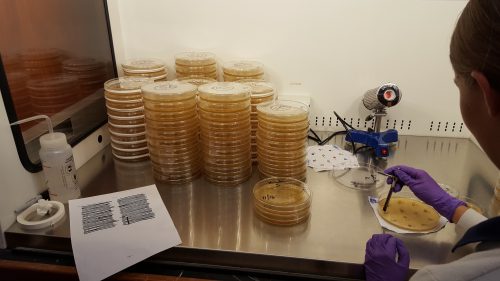The Earth contains an immense amount of biodiversity, more than can be explained by survival of the fittest. For example, forests contain a wide variety of plants all competing for the same soil, water, and light. These plants are able to coexist despite some being better competitors than others. New research from a team of Yale scientists explains one way this phenomenon occurs.
The Yale research team studied competition in wood-decaying fungi. Their research showed that when pairs of fungi grow together, a winner and loser emerge. If groups of fungi grow together, “intransitive loops” allow the losers to coexist with winners. Intransitive loops are like a game of rock-paper-scissor: each fungus can beat some competitors but can be beaten by others. Dr. Daniel Maynard, lead author of the study, explains it as akin to a gladiator ring. “If you put me in a ring with 1,000 gladiators, I might be able to hide in a corner and survive. The gladiators are too busy fighting each other to kill me,” Maynard said.
Intransitive loops are also important for ecosystem health. “The more species you have, the more of the loops there are, and the more resilient the ecosystems are to changes in the environment, like climate change,” said Dr. Tom Crowther, now a professor at ETH Zurich. The resiliency comes from preserving diverse abilities in the ecosystem. These abilities may allow the weaker competitor and other organisms to cope with changes in the environment. It is hard to predict exactly how ecosystems will deal with climate change, but this research provides an important foundation. “The more data that we [have]… the better we can predict what will happen,” Crowther said. “Knowing what you are fighting is the first step.”

